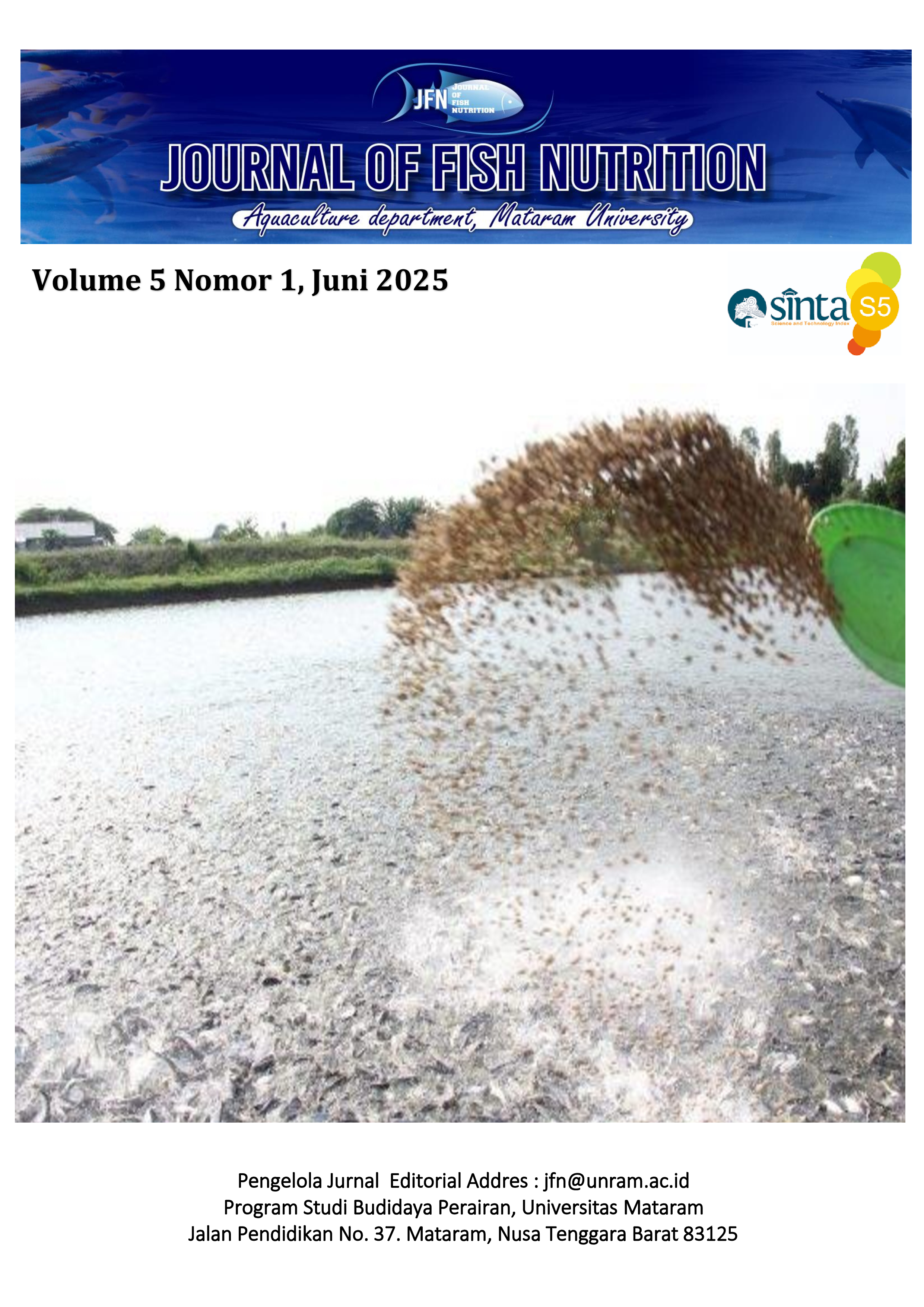OPTIMIZING THE BREEDING AND REARING TECHNIQUES OF TRANSGENIC GLOFISH TETRA (Gymnocorymbus ternetzi) IN TROPICAL FRESHWATER AQUACULTURE SYSTEMS
DOI:
https://doi.org/10.29303/jfn.v5i1.7548Kata Kunci:
GloFish Tetra, ornamental aquaculture, stocking density, spawning substrateAbstrak
The transgenic GloFish Tetra (Gymnocorymbus ternetzi), engineered to express fluorescent proteins, is increasingly popular in the global ornamental aquaculture industry. However, optimized protocols for its breeding and larval rearing under tropical freshwater conditions remain underexplored. This study aimed to evaluate the effects of substrate type and larval stocking density on reproductive performance, larval survival, growth, feed utilization, and fluorescent color intensity in GloFish Tetra. A 3×3 factorial experiment was conducted at a tropical hatchery in Indonesia using three substrate types—no substrate (S0), artificial fiber mat (S1), and natural aquatic vegetation (Hydrilla verticillata, S2)—combined with three stocking densities: 15, 10, and 5 larvae per liter. Key parameters, including fecundity, fertilization rate, hatchability, survival rate (SR), specific growth rate (SGR), feed conversion ratio (FCR), and color intensity (∆E), were measured and statistically analyzed using a two-way ANOVA. Results demonstrated that the S2-D5 treatment (natural vegetation with low density) significantly improved fecundity (330.2 ± 10.8 eggs), hatchability (82.3 ± 2.7%), SGR (4.30 ± 0.11%/day), and color intensity (∆E = 17.6 ± 1.0), while achieving the lowest FCR (1.31 ± 0.07). In contrast, high-density and substrate-free conditions (S0-D15) yielded the poorest performance across all metrics. These findings underscore the crucial role of environmental enrichment and density management in enhancing both biological and aesthetic traits in GloFish Tetra. This study presents a validated protocol for enhancing hatchery success and improving the ornamental quality of transgenic fish in tropical aquaculture systems.Unduhan
Diterbitkan
2025-06-30
Cara Mengutip
Bagus Dwi Hari Setyono, Dewi Putri Lestari, & Thoy Batun Citra Rahmadani. (2025). OPTIMIZING THE BREEDING AND REARING TECHNIQUES OF TRANSGENIC GLOFISH TETRA (Gymnocorymbus ternetzi) IN TROPICAL FRESHWATER AQUACULTURE SYSTEMS. Journal of Fish Nutrition, 5(1), 68–78. https://doi.org/10.29303/jfn.v5i1.7548
Terbitan
Bagian
Articles






